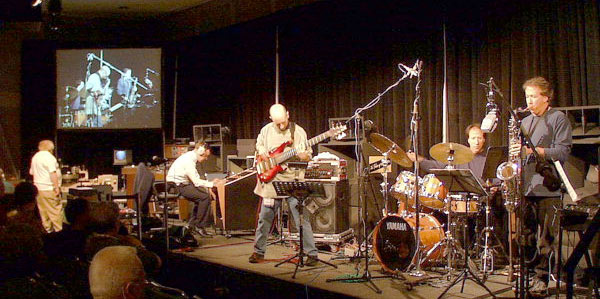Ultimate Format?
I received my new copy of the Absolute Sound magazine the other day, the October issue. I don’t spend a lot of time reading through the audiophile publications but I do enjoy reading the letters to the editor and the editorial page. Robert Harley’s editorial is entitled, “The Ultimate Format?”, which made it a must read for me. Could it be possible that there’s a new format that I haven’t heard about? Or perhaps Robert would pronounce a winner in the HD PCM vs. DSD debate. None of the above.
It turns out that he tapped a variant of vinyl as the “ultimate format”…another respected audio journalist moving forward while looking in the rear view mirror. I understand that Robert is paid to write editorials that amuse, information and please his readers AND the advertisers and at least he wrote the title as a question, so there’s really not foul here. He casts aside analog tape, one of the current darlings of the audiophile crowd, and postulates that direct to disc is the ultimate format.
How about we do a quick survey of consumer audio formats? Following a roughly chronological sequence, we have 78 rpm lacquer, 33 1/3 vinyl LPs, analog tape, cassette, 8-track, compact discs, direct-to-disc LP, miniDisc, digital compact cassette, DVD-Video, DVD-Audio, SACD, MP3, AAC, FLAC, AIF, WAV, DSD (more soundfile formats), Pure Audio Blu-ray and Blu-ray (I may have left out a flavor of two…but this is a reasonably complete list).
I don’t think it would be too difficult to create a matrix or chart that would list the advantages and disadvantages of each of the formats listed above, but let’s focus on a couple….analog tape and vinyl LP.
We should all be aware that virtually all of your favorite “classic” LPs were originally recorded on analog tape. Even if they were captured directly to 2-track stereo from the live mikes, like the “Will the Circle Be Unbroken”, the fidelity of a well made analog master can be dramatically better then a vinyl LP pressed from that master after it has been subjected to the machinations of the disc mastering engineer (we talked about those things the other day). I have even started writing about the RIAA curve.
Analog tape can best vinyl LP in terms of dynamic range, channel separation, speed accuracy, frequency extension and more. But the usual production chain involves several generations, which diminish the quality of the sound. The “flat master” mix tape is then EQ’d specifically for vinyl and diminishes the quality even further because of the limitations of the vinyl LP format.
So in 1968 Doug Sax and Lincoln Mayorga (and Doug’s brother Sherwood) decided to track an entire album side directly to a disc mastering machine…a lathe that cuts the groove on a piece of lacquer. The music would go from the microphones straight to the groove with none of the intervening tape stages. Sounds promising right?
As I’ll show tomorrow…it might be better than normal vinyl but it is still vinyl.


“another respected [audio] journalist moving forward while looking [in] the rear view mirror”. . . Excellent – and SO true!
When people ask themselves what the best audio format is they allow their vision to be clouded by nostalgia. If it was really about audio quality, the analog guys would almost universally be advocating tape.
Analog has analog problems, digital has analog plus digital problems.
Every format has problems. It’s the magnitude of those imperfections that matters. When you say that digital has “analog problems plus digital problems”, it should be made clear that the analog problems of tape and vinyl are orders of magnitude more damaging than the “analog problems” associated with digital AND that the digital problems pale in comparison to analog problems. If you love vinyl and analog tape…great. But both of those formats are no able to reach the potential of high-resolution PCM audio.
Thanks for telling the truth, Mark, even if your views aren’t fashionable with the boutique audio crowd who slavishly follow the fashionistas of the two main magazines. I hope to make your blog Required Daily Reading!